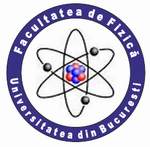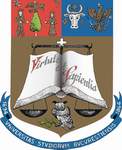| |
 |
UNIVERSITY OF BUCHAREST
FACULTY OF PHYSICS Guest
2025-11-23 12:59 |
 |
|
|
|
Conference: Bucharest University Faculty of Physics 2025 Meeting
Section: Atmosphere and Earth Science; Environment Protection
Title:
Deep learning approach in space objects detection
Authors:
Cristian OMAT (1,2), Mirel BIRLAN (1,2,3), Dan Alin NEDELCU (2)
*
Affiliation:
1) University of Bucharest, Doctoral School of Physics, 405 Atomistilor street, Magurele, Romania
2) Astronomical Institute of the Romanian Academy, 5 Cutitul de Argint, Bucharest, Romania
3) Institut de Mecanique Celeste et des Calculs des Ephemerides, Observatoire de Paris, 77 Avenue Denfert-Rochereau, F-75014 Paris, France
E-mail
cristian.omat@astro.ro
Keywords:
satellite, detection, space debris, ML, YOLO
Abstract:
As the population of satellites in Low Earth Orbit (LEO) continues to grow, the need for advanced monitoring systems has become increasingly critical. This expansion underscores the importance of real-time, automated solutions to ensure the sustainable management of space activities.
This research investigates a novel application of the You Only Look Once (YOLO) algorithm for real-time detection of sky objects. Based on a state-of-the-art convolutional neural network (CNN), YOLO is renowned for its capability to deliver rapid and accurate object recognition through single-pass predictions.
For this study we used the new YOLO12 algorithm, released in February 2025. During of nine observational campaigns (January - February 2025) was captured 1,589 FITS images from 96 known space objects observable transits. 1,411 images from an all-sky camera [1] installed at Berthelot Observatory (IAU Code L54) were selected for ML training: 988 images (70%) for the training set, 282 images (20%) for the validation set and 141 images (10%) for the test set [2]. Following the training, tunning and validation steps, the performance of our model leads 95.5% accuracy and 91% precision. It should be mentioned that our test model was trained on a small sample of images and most of the space objects were fainter visible (magnitude interval between +3.5 and +5).
Based on the analysis of the confusion matrix, loss curves, and performance metrics, we can conclude that our detection model has been trained effectively, though opportunities for further optimization remain.
References:
1. Nedelcu, A. D., Birlan, M., Turcu, V., Badescu, O., Boaca, I., Gornea, A., Blagoi, O., Danescu, C., Paraschiv, P. (2018) . The MOROI network. Meteorites Orbits Reconstruction by Optical Imaging, Outlook in Astronomy, Astrophysics, Space and Planetary Sciences, p. 21.
2. Dwyer, B., Nelson, J., Hansen, T., et. al. (2024). Roboflow (Version 1.0) [Software]. Available from https://roboflow.com.
|
|
|
|

